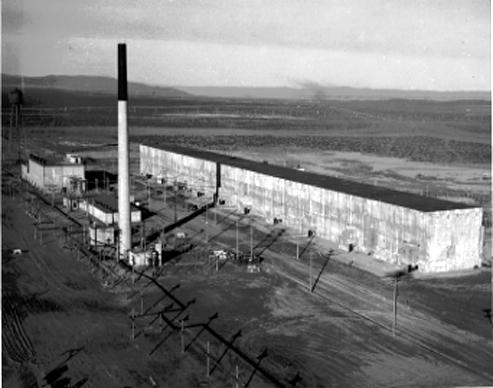The Atomic Bomb
A Project Bigger than Manhattan
You want a big project? Try something with the scope of building
the first atomic bomb. Check out Carey
Sublette's relatively brief, yet comprehensive chronology
of the development of the first atomic bombs (or take your time and
familiarize yourself with all
aspects of nuclear weaponry). You can see as the chronology
unfolds, in the end, it was all up to Stan Thompson at Hanford as to whether
their would be enough fissionable material for a production of more than
one atomic bomb every year (The physicists at Oak Ridge discovered that fissile
grade metal for atomic bombs was a lot easier to talk about than to produce with
their cyclotrons or gas diffusion devices).
Even if you narrow it down to using plutonium for your bomb, first,
you have to find someone to build and run your plutonium factory. That's
what the folks at DuPont were willing to do for the U.S. in the Second World
War. Read ("DuPont Agreement")
part of the contract and see for yourself what a "guts balls"
undertaking it was. Then read Michele Gerber's
account of the first industrial manufacturing plant to produce a pound and a
half a day of a brand new element: plutonium. The size of the undertaking
will knock your socks off! Stan Thompson created and developed the process
that successfully scaled up from 20 micrograms in his test tube to the giant
radiochemical reprocessing portion of making plutonium
at the Hanford Engineering Works.
This is a photograph of just one of the three
800' long buildings that were built for Stan Thompson's bismuth phosphate
process used to separate plutonium at Hanford! This separation building is
100' high (a third of it is buried below grade). It is approximately 80'
wide and the walls, floors and ceilings are 4' thick.

Thompson went from being an organic chemist at Standard Oil to
being the leading inorganic chemist in nuclear chemistry in about three
months. Read of his 1943-1944 activities
(this is a long load so be patient!) at the Met Lab in
Chicago from the selected pages of one volume of the autobiographies of
Glenn Seaborg. A few papers he produced as well as selections from the
Hanford monthly reports for January through June are featured in Hanford
papers. Most everything else involving Thompson's role in the Manhattan
Project remains still
classified.
| 